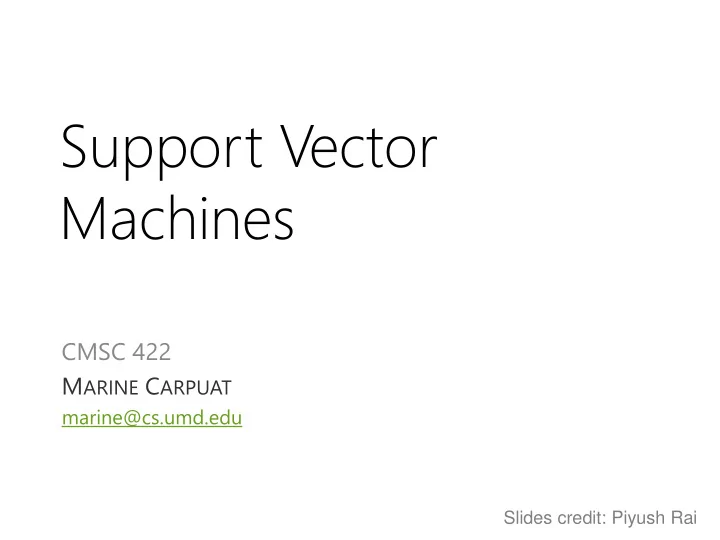

Support Vector Machines CMSC 422 M ARINE C ARPUAT marine@cs.umd.edu Slides credit: Piyush Rai
Back to linear classification • Last time: we’ve seen that kernels can help capture non-linear patterns in data while keeping the advantages of a linear classifier • Today: Support Vector Machines – A hyperplane-based classification algorithm – Highly influential – Backed by solid theoretical grounding (Vapnik & Cortes, 1995) – Easy to kernelize
The Maximum Margin Principle • Find the hyperplane with maximum separation margin on the training data
Support Vector Machine (SVM)
Characterizing the margin L et’s assume the entire training data is correctly classified by ( w ,b) that achieve the maximum margin
The Optimization Problem
Large Margin = Good Generalization • Intuitively, large margins mean good generalization – Large margin => small || w || – small || w || => regularized/simple solutions • (Learning theory gives a more formal justification)
Solving the SVM Optimization Problem
Solving the SVM Optimization Problem
Solving the SVM Optimization Problem
Solving the SVM Optimization Problem A Quadratic Program for which many off-the-shelf solvers exist
SVM: the solution!
What if the data is not separable?
Support Vector Machines • Find the max margin linear classifier for a dataset • Discovers “support vectors”, the training examples that “support” the margin boundaries • Allows misclassified training examples • Today: we’ve seen how to learn an SVM if the data is separable • Next time: we’ll solve the more general case
Recommend
More recommend